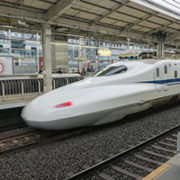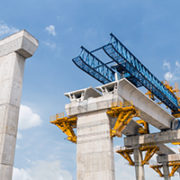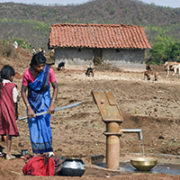Tag Archives | KE Seetha Ram
Transport, Urban development
 Economics, Industry and trade, Information and Communications Technology
Economics, Industry and trade, Information and Communications Technology
 Economics, Transport
Economics, Transport
 Sanitation, Water
Sanitation, Water
 Urban development
Urban development
 Health
Health
 Environment
Environment

Delivering safety for high-speed rail

As we are increasingly relying on technical innovations to solve some of society’s most complex problems, technological advancements such as artificial intelligence are contributing to new, modern modes of transportation, especially to enhancing safety. However, technology is only one of many critical factors for safety, and there is a need to understand the other factors.
The spillover effects of digital platforms

“Over-the-top” (OTT) service providers are referred to as so because they allegedly ride exclusively on top of the infrastructure laid by telecommunications service providers. Hidden behind the term OTT is the notion that such providers do not invest in the network infrastructure yet provide the same services as telecommunications service providers. While this may seem intuitive to some through a cursory examination of the marketplace, what such assertions fail to consider are the numerous “edge-of-the-network” investments by OTT service providers as well as the massive efficiency, flexibility, and propensity-to-scale inherent in OTT business models.
A step forward in attracting private sector financing for infrastructure projects

Such infrastructure projects would not be effective without proper operation and maintenance, and economic activities would be unsustainable without efficient infrastructure. The transport sector is an important component of any economy, and it is a crucial input for development. This is especially so in a globalized economy, where economic opportunities are increasingly related to the efficient mobility of people, goods, and information.
No matter how poor you are, there is always a way to improve sanitation

The “out of sight, out of mind” attitude is proving to be critical for the slow progress toward target 6.2 of the Sustainable Development Goals (SDGs), focusing on global, safely managed sanitation. There is a general lack of awareness among users on the whereabouts of their poop, and the discussion on wastewater management is scarce and still a taboo topic in many parts of the world, leading to a lack of safely managed sanitation services. Besides the lack of demand hampering progress, the supply side of wastewater management is equally grim.
International partnerships for catalyzing the growth of India’s Smart Cities

The Smart Cities Mission, launched by the Government of India, aims to transform the urban governance ecosystem, especially urban local bodies (ULBs). It is hoped that the mission will help attract innovation, expertise, and financial resources for the holistic development of the ever-expanding urban areas. The creation of sector-focused, region-specific “special purpose vehicles” (SPVs) is an attempt to unleash the potential of a consortium-based approach in delivering the interdisciplinary ideation and implementation of projects.
Universal health coverage in the Fourth Industrial Revolution

In October 2018, the world will commemorate the 40th anniversary of the seminal Declaration of Alma-Ata where the aspiration of “health care for all” was boldly declared. The realities have sadly fallen far short of the rhetoric—half the world lacks access to essential health services and 100 million people fall into financial catastrophe due to medical bills.
Minimizing the Cost of Fecal Sludge Management through Co-Treatment

The City Development Initiative for Asia, the Asian Development Bank, other multilateral agencies, and national governments are funding sewerage systems for medium and large cities throughout Asia. Even at “full” sewerage coverage, cities often find that some, if not many, buildings are still reliant on septic tanks, pits, or other onsite systems. For cities with or that are planning sewerage systems, co-treatment may enable citywide sanitation by minimizing the need for standalone fecal sludge treatment plants.


Search
Subscribe / Connect to Asia Pathways
Subjects
- Accelerating Progress in Gender Equality
- Addressing Remaining Poverty and Reducing Inequality
- Agriculture and natural resources
- Capacity development
- Climate change
- Economics
- Education
- Energy
- Environment
- Finance sector development
- Gender
- Governance and public sector management
- Health
- Industry and trade
- Information and Communications Technology
- Infrastructure
- Making Cities More Livable
- Miscellaneous
- Population
- Poverty
- Private sector development
- Regional cooperation and integration
- Sanitation
- Social development and protection
- Strengthening Governance and Institutional Capacity
- Subjects
- Transport
- Uncategorized
- Urban development
- Video Blog
- Water
Recent Posts
- Investing in Childcare a Win for Women and the Economy
- Flush and Flourish: Upgraded Toilets Can Transform Lives in Rural Asia
- New Ways for Climate Finance and Development in Asia and the Pacific
- Rethinking High-Rise Living: Balancing Urban Growth and Sustainability in Asia’s Cities
- Navigating Linear Transport Infrastructure Through Conservation Landscapes




Recent Comments